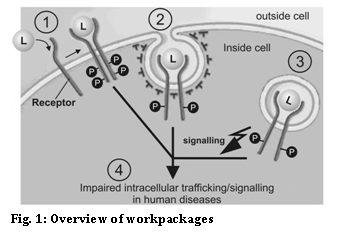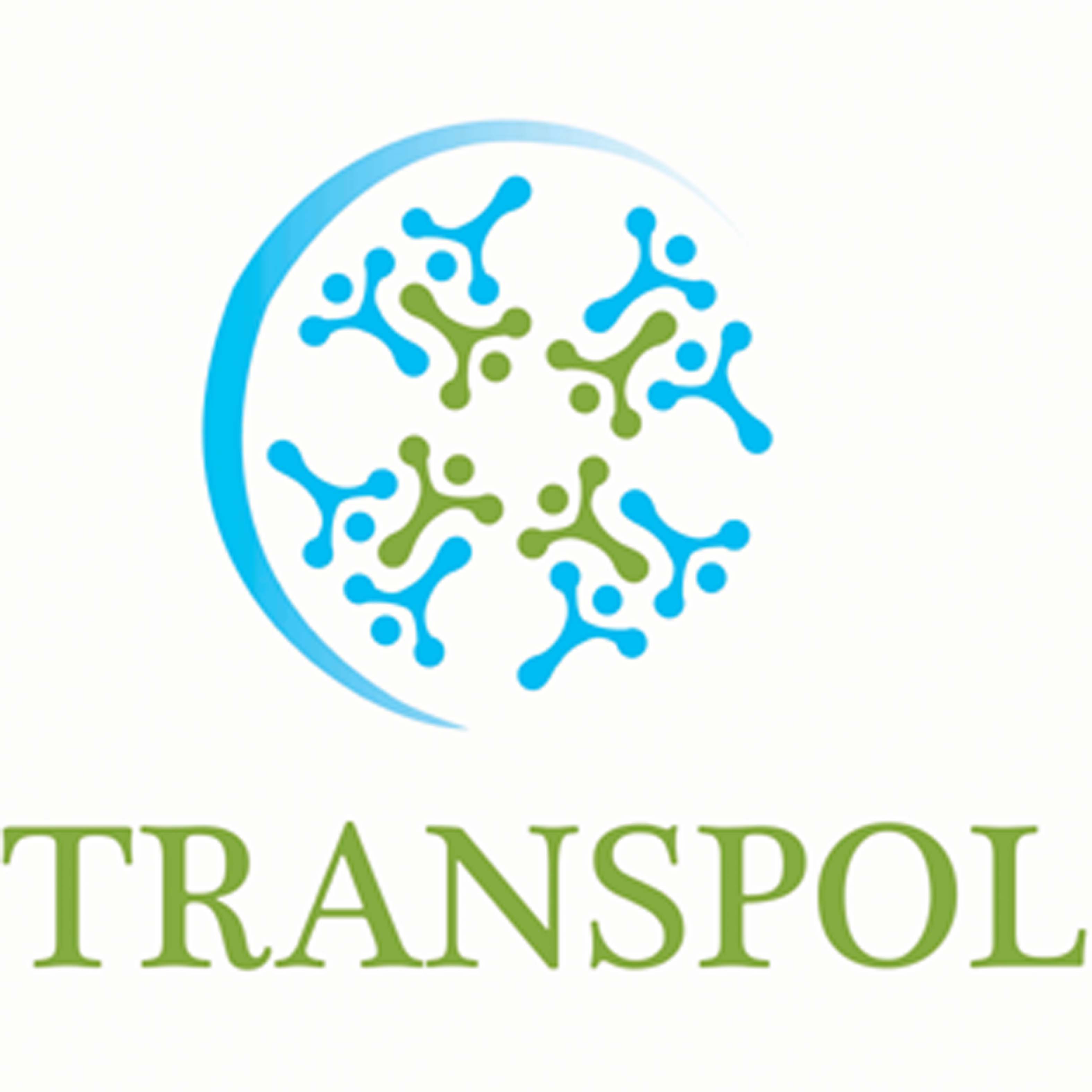scientific programm:
 As described above the tight connection between endocytosis/intracellular trafficking and cellular signalling has been neglected for a long time. Consequently, many open questions regarding this relationship still exist. Thus, the signalling mechanisms of many receptors across the plasma membrane, which will lead to membrane deformation followed by endocytosis, are in many cases largely unclear. Furthermore, for many receptor systems information about the interplay of their intracellular trafficking routes and their signalling capacity is elusive. Finally, precise knowledge how defects in intracellular trafficking/signalling lead to disease is often incomplete.
As described above the tight connection between endocytosis/intracellular trafficking and cellular signalling has been neglected for a long time. Consequently, many open questions regarding this relationship still exist. Thus, the signalling mechanisms of many receptors across the plasma membrane, which will lead to membrane deformation followed by endocytosis, are in many cases largely unclear. Furthermore, for many receptor systems information about the interplay of their intracellular trafficking routes and their signalling capacity is elusive. Finally, precise knowledge how defects in intracellular trafficking/signalling lead to disease is often incomplete.
The aim of this program is to completely cover the initial part of a signalling cascade from the ligand/receptor interaction followed by the internalisation of the ligand/receptor complex and its continuous signalling properties during intracellular trafficking, but in particular focussing on the protein/lipid interface.
Description of the SCIENTIFIC WORK PACKAGES:
1. Signal transduction mechanism of ligand/receptor systems across the plasma membrane
A consistent mechanistic picture for receptor activation in the membrane environment is still missing and the details of this important step of signal transduction are often poorly understood for many ligand/receptor systems. Scientific objective for this work package is the understanding of the signalling mechanism across the plasma membrane of the following three resident membrane receptors:
a.) The interferon-receptor
b.) The receptor for the bacterial toxin ShigaB (Shigatoxin B), the glycolipid Gb3
c.) The ionotropic glutamate-receptor (AMPA receptor).
2. Characterization of protein/lipid interactions and their relation to endocytosis
Endocytosis is a prime example of the concerted functional interplay of proteins and plasma membrane. The induction and sensing of membrane curvature is a crucial event during endocytosis, since a virtually flat membrane has to be bent to form an invagination and eventually a spherical vesicle. For this work package of our ITN we will address the following points:
a.) The induction and sensing of membrane curvature of clathrin and clathrin binding proteins
b.) The induction of clathrin-independent membrane invagination via Shigatoxin B
c.) Modelling protein-induced membrane curvature and endocytosis using coarse-grained simulations
d.) Impact of lipid mechanics and lateral organization on membrane deformation and trafficking
3. Understanding the molecular relationship of intracellular trafficking and signalling
Clearly, many endocytosed receptors do not stop signalling after internalization but rather become part of a signalling endosome, which continues signalling during intracellular trafficking. Scientific objectives within this work package of the ITN are:
a.) Analysis of the role of endocytic and trafficking pathways in interferon receptor signalling
b.) Analysis of the role of the protein tyrosine phosphatase in intracellular receptor trafficking and its role in cell polarization
c.) The mechanisms of endosome-to-nucleus trafficking and its impact on transcriptional regulation
d.) Testing of models to characterize cell adhesion and signalling/trafficking processes using atomic force microscopy
4. Impaired intracellular trafficking/signalling in human diseases
In workpackage 4 we will directly focus on disease-relevant proteins which have been shown to function in endocytosis/intracellular trafficking, and analyze their role in the establishment of specific diseases. The specific scientific objectives are:
a.) The role of the protein tyrosine phosphatase PTP-BL in intracellular trafficking, metastasis, and tumor invasion
b.) Functional characterization of the Parkinson´s disease protein LRRK2 in synaptic endocytosis
c.) The impact of intracellular trafficking/signalling on the mechanical properties of cells measured with atomic force microscopy and optical stretcher and its relevance to tumor invasion and metastasis



